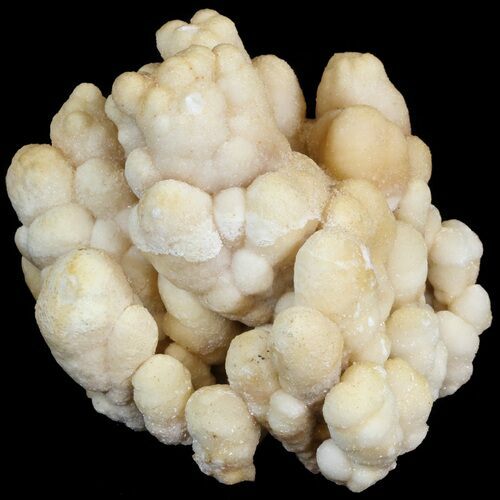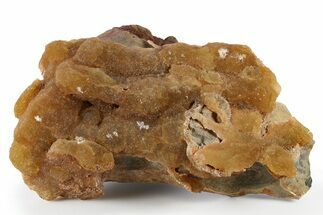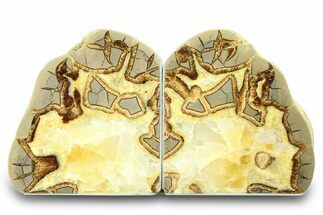This Specimen has been sold.
4.2" Aragonite and Calcite Formation - Morocco
This is a beautiful formation with aragonite, from Morocco. When viewing the mineral under natural and artificial light, aside from the interesting white botryoidal formations, the mineral may seem slightly uninspiring. But when placed under shortwave UV light, this mineral fluoresces due to the calcite within the specimen. A broken stalactitic projection allows for a cross section view, disclosing this minerals formation pattern and surrounding atmospheres through crystallization.
Stalactites form when water, seeping through rock, reaches an opening such as a cave or tunnel. Once this mineral-rich water (calcite in this case) precipitates out of the rock wall/ceiling, it leaves behind a crystal as the precipitate builds with each drop of water.
Stalagmites are likely to form from this process as those drops land on a cave floor, since the drops from the ceiling will still contain high mineral content. As long as water keeps flowing, it will continue to precipitate into stalactites and stalagmites.
Stalagmites are likely to form from this process as those drops land on a cave floor, since the drops from the ceiling will still contain high mineral content. As long as water keeps flowing, it will continue to precipitate into stalactites and stalagmites.
Morocco is well known for its abundant aragonite formations, most commonly seen as radiating clusters of clear to deep reddish prismatic hexagonal crystals known as floaters. Such mineral aggregations are called floaters because they form without attachments to walls, seemingly free-floating in the matrices they are extracted from.
Besides these floaters, Moroccan aragonite takes just about every other form of the mineral you can think of. Aragonite commonly forms stalactitic and stalagmitic formation in caves, even coating the walls and ceilings of caves in nubby formations called cave popcorn. These and massive formations make for wonderful polishing material. Botryoidal, fibrous, and scalenohedral aragonite also occurs.
Besides these floaters, Moroccan aragonite takes just about every other form of the mineral you can think of. Aragonite commonly forms stalactitic and stalagmitic formation in caves, even coating the walls and ceilings of caves in nubby formations called cave popcorn. These and massive formations make for wonderful polishing material. Botryoidal, fibrous, and scalenohedral aragonite also occurs.
 Reviews
Reviews













